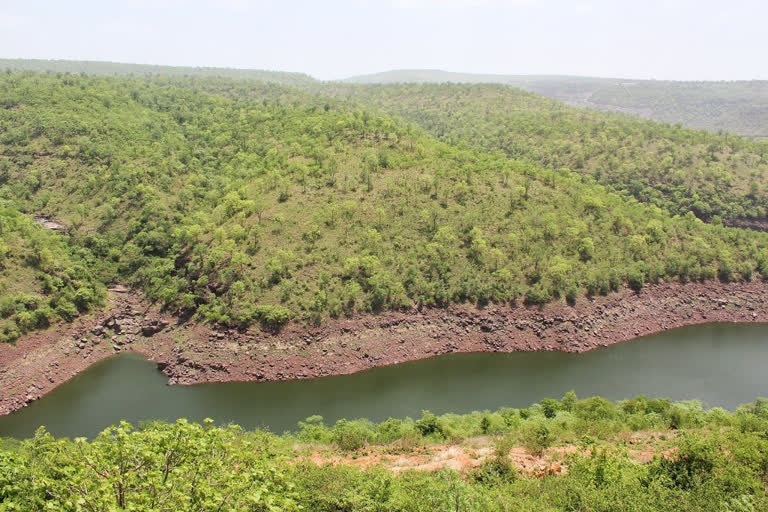Hyderabad: Policies which poison farmlands, increase pollution, and deplete natural assets are worsening people's lives. Decisions to destroy forests, wildlife and water resources are hindering development. The Central government's decision to explore uranium resources in Nallamala forests which are spread across Andhra Pradesh and Telangana comes under this category.
The Centre is turning a deaf ear to the widespread protests from several corners of the society. It is estimated that there are 2,32,315 tonnes of uranium deposits nationwide. Andhra Pradesh has the highest prevalence of the heavy metal at 52.75 per cent followed by Jharkhand (24.72), Meghalaya(8.41), Telangana (6.77), Rajasthan (3.44), Karnataka (1.71), Chhattisgarh (1.45), Uttar Pradesh (0.29), Himachal Pradesh (0.29), Maharashtra (0.13) and Uttarakhand (0.04).
One can notice that the government organisations themselves are disobeying pollution control laws in places like Tummalapalle village in Kadapa district, Andhra Pradesh. The exploration and processing activities by Uranium Corporation of India in this place are against the rules set by the Ministry of Environment, Forest and Climate Change and even the State Pollution Control Board. The industry is dumping radioactive waste into a nearby river, polluting groundwater and causing health hazards to the public.
Management of waste and by-products is as important as the metal extraction itself, but no efforts are put in this regard. According to the State Pollution Control Board, water samples in the area have high concentration of salts, minerals, sulphates, uranium, chromium, and nickel. According to the World Health Organization and Indian Drinking Water Standards, high levels of sodium salts and toxins in the water are responsible for kidney and gastrointestinal diseases. Uranium causes cancer and skin allergies, while chromium and nickel cause respiratory ailments. Due to high alkalinity, agricultural lands become infertile, resulting in zero harvest.
According to the conditions set by Consent for Establishment (CFE) issued on June 22, 2007, by Andhra Pradesh Pollution Control Board (APPCB), the uranium tailing ponds must be lined with bentonite with minimum 500mm layer with 250 micron of polyethylene layer with an adequate protective layer of clay or sand of 250 mm. But till now, polyethylene layers have not been established in the ponds.
According to the guidelines released last year, precautions must be taken to avoid tailing pond water from seeping into surrounding areas. During 2003-05, uranium exploration was carried out in Amrabad Tiger Reserve but got stalled after protests from people. Recently, another round of exploration is being carried out for which borewells will be dug across 83 square kilometres.
Nallamala forests are the abode of nature and indigenous tribes like Chenchu and Banjara. It is the fountainhead of biodiversity. Due to uranium mining, the surrounding Krishna river will also be polluted, harming public health. Many political leaders, social activists and scientists are firmly opposing this decision. Supreme Court has ordered that the stakeholders' opinion must be considered before undertaking any exploration, but the government organisations are not paying heed to these orders.
The world is looking towards solar and wind energy. Production of solar energy has increased by 17 per cent and wind energy by 35 per cent worldwide, while nuclear energy has increased by only 25 per cent.
Developed countries have risk assessment and control mechanisms for mining activities. In the USA, there is a specialized organisation to assess the losses to farmers due to uranium mining. Countries like Germany and Japan are gradually shutting down their nuclear power plants to save their citizens and the environment.
However, the situation is completely different in India. The process implemented to explore uranium in our country is shocking. Everyone must contemplate whether this is development or destruction.
Read: Resolution urges Centre not to permit uranium mining in Nallamala forest



